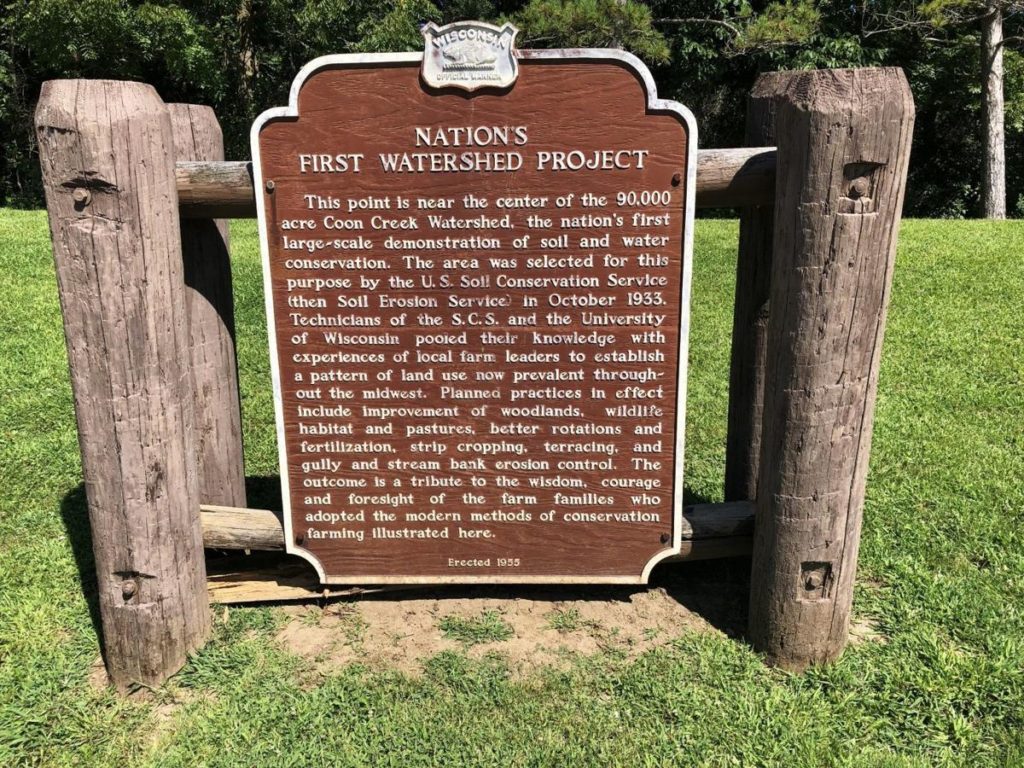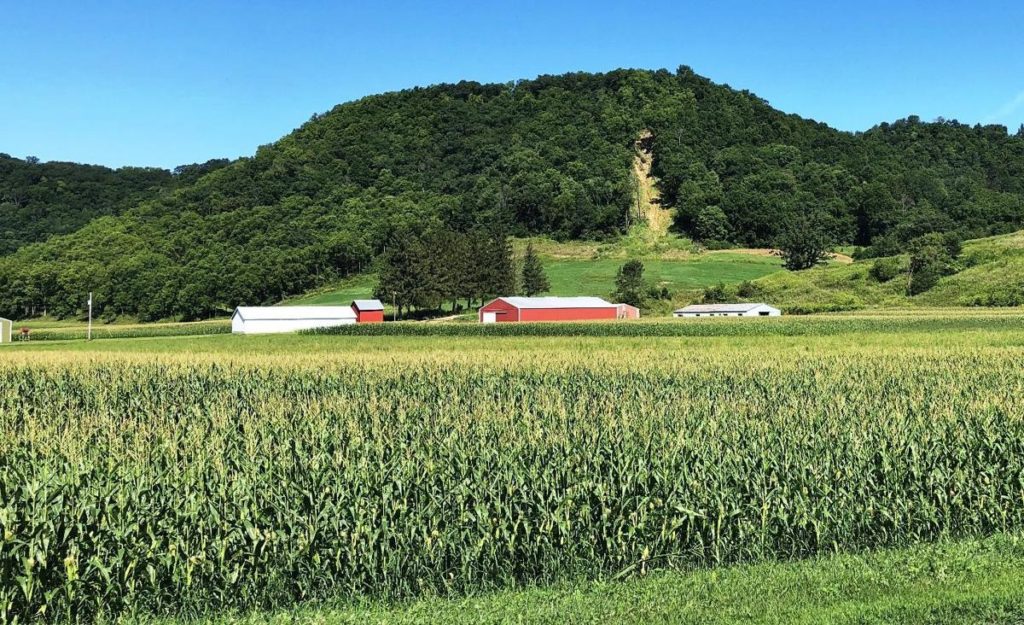Back Home by Chris Hardie
» Download this column as a Word document
» Download photos that accompany this story
» Chris Hardie’s headshot
“The great wealth of the region is not in gold or precious stones, but in soil — rich, black topsoil — crop-grower and stock-feeder.”
— H.H. Bennett, chief of the U.S. Soil Conservation Service, 1941
The world was at war and the United States was seven months from entering the global conflict when our country’s top conservationist said a powerful enemy was gnawing at the Upper Mississippi Region.
Bennett, in a story published May 7, 1941, in the (Black River Falls) Banner Journal, identified the enemy as soil erosion. But through proper conservation practices just beginning in Jackson County, farmers not only saved soil but increased their yield.
“These farmers are pioneering a new frontier, with profit to themselves and benefit to all of us — because all of us depend either directly or indirectly upon the soil for our livelihood,” Bennett wrote. “They are patriots in the true sense of the word — fighting to defend their native soil.”
The nation was reeling from the Great Depression and the Dust Bowl years, which lasted from 1931 through 1939. Hundreds of millions of acres of land were lost to crop production. In 1935, Congress declared soil erosion a “national menace” and established the Soil Conservation Service in the Department of Agriculture, appointing Bennett as the first director. Conservation techniques like strip cropping, contour plowing, cover crops, crop rotation, streambank management, and terracing were introduced to farmers, who were paid to implement the practices.

Wind erosion was not the main enemy in our region; steep hillsides made water erosion the biggest threat. The Coon Creek Watershed Project in Vernon County became in 1933 the country’s first large-scale erosion control project.
Recently, I made a pass through Timber Coulee, where as much as 10 inches of rain fell on Aug. 27, 2018. Conservation dams failed, sending a wall of water down Coon Creek and flooding parts of the village of Coon Valley.
A lot has changed in a year, but signs of the flood are still evident, especially on hillsides where landslides occurred. It didn’t help that the same area received another heavy deluge of 5 to 8 inches in July.
Bennett had $5 million in 1933 to show farmers that conservation practices could not only protect the land but also increase farmer income. By 1935, 418 of the 800 farms in the 91,000-acre watershed had signed cooperative agreements to implement erosion-prevention measures. The success spread to other areas. The state of Wisconsin passed conservation legislation in 1937 and in 1939, allowing the establishment of county conservation districts.
In my home county of Jackson, the first watershed was Upper Pigeon Creek District in 1937, which became part of the county’s district in 1940 when the new legislation took effect. Helping with the labor were workers from the Civilian Conservation Corps. In 1933, a Civilian Conservation Corps camp was established at North Bend — the first in the country. Others soon followed. Under the direction of University of Wisconsin professors, 43 earth dams with concrete spillways were built in the summers of 1933 and 1934 by the workers from the North Bend camp.
The successes of those conservation projects are evident. A 1982 study of the Coon Creek project calculated that erosion was reduced at least 75% since 1934. Coon Creek has become a national trout-fishing destination.

But let’s not forget the lesson. In recent years as more cropland is rented, I’ve noticed farmers plowing through grassy strips in fields designed to serve as water runs during heavy rains. There is more erosion as more corn is planted every year on the same fields.
As our weather events become more severe, the challenges of erosion are even more complex. The La Crosse Tribune reported that La Crosse, Monroe and Vernon counties in Wisconsin have applied for a federal grant to study how water drains through the Coon Creek watershed in light of changing trends in land use and rainfall patterns. The watershed study will include a cost-benefit analysis for flood-control dams.
I hope the grant is awarded and that we do more to protect our soil. The changing weather demands that we do. It is still the wealth of our country and we all need to be good stewards of the land.
Chris Hardie spent more than 30 years as a reporter, editor



